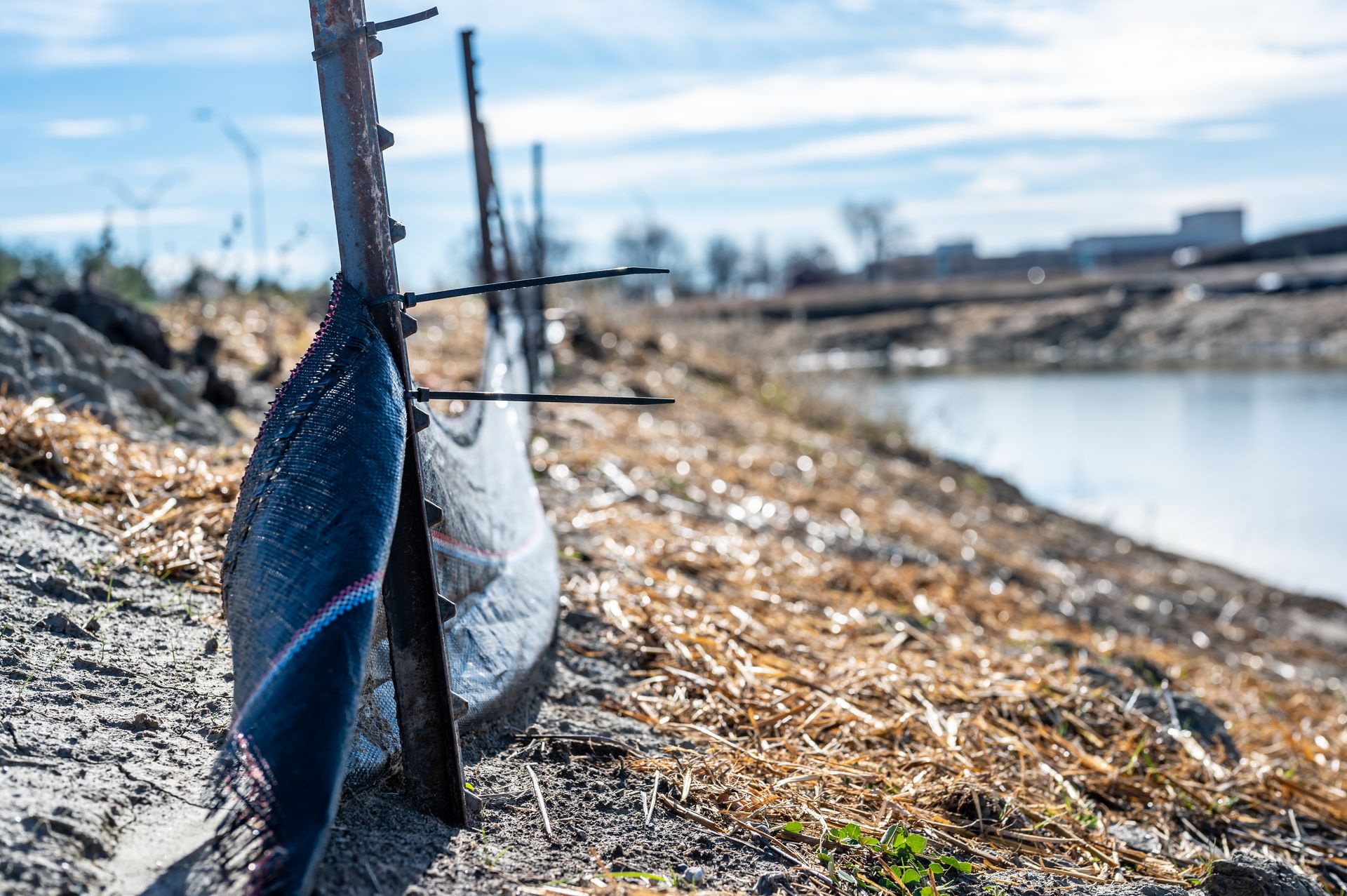In the highly specialized construction field, rudimentary controls often make the most significant difference.
Silt fences have long been a trusted partner in stormwater management for construction companies. These porous fabrics filter out heavy sediment particles while protecting vulnerable plots from excessive erosion.
Learn more about how silt fences work, when they are required, what suitable alternatives are available, and the benefits of hiring an outside company to assist you with installation and configuration.
What is a Silt Fence?
Silt fences are made of geotextile fabric affixed to wooden posts anchored in the ground. The fabric filters and redirects a large portion of water, preventing sediment from leaving the property and erosion from occurring.
Silt fences are most often installed around the perimeter of construction sites and across slopes where lands are most vulnerable.
Why Silt Fences Are Important to Construction
Silt fences offer adequate erosion and sediment control. For example, silt fences can absorb sediment-laden water while also controlling the movement of water around certain areas.
Likewise, this improves water quality by reducing turbidity. This, in turn, helps protect wildlife and local drinking water for surrounding communities.
Of course, silt fences are a necessary part of regulatory compliance, especially if you have an active stormwater management plan and require an SWPPP for permitting.
Finally, by reducing erosion of the worksite, silt fences aid in stabilization efforts and simplify the process.
Types of Silt Fences
When selecting a silt fence for any residential or commercial project, it’s essential to understand the differences between their various types.
- Conventional Silt Fences: The traditional type consists of geotextile fabric supported by wooden or metal stakes. These are effective for medium-term projects.
- Wire-Backed Silt Fences: Wire-backed fences are enhanced with wire mesh backing for added stability and durability. Wire-backed silt fences are suitable for longer-term projects and areas with higher water flow.
- High-Visibility Silt Fences: Equipped with bright colors for increased visibility, this type is often used in areas where aesthetics and public perception are important.
- Permeable Silt Fences: Designed with materials that allow water to pass through more freely while still capturing sediment, permeable silt fences are designed for areas with high water flow.
How Reliable Are Silt Fences?
Silt fences are considered highly reliable and effective. According to some estimates, 100 feet of silt fencing can hold up to 50 tons of sediment.
However, the reliability of silt fences depends on several factors, such as installation, maintenance, sizing, and complementary measures. It’s often the case that silt fences become overwhelmed because they are not properly cleaned after rainstorms or heavy weather conditions. Therefore, regular cleaning is absolutely essential to proper silt fence operation.
Alternatives to Silt Fences
While silt fences are effective, alternatives may be considered based on site-specific conditions:
- Straw Wattles: Tubular structures filled with straw or other natural materials. They slow water flow, capturing sediment and preventing erosion.
- Sediment Basins: Depressions designed to capture and settle sediment-laden water. They are effective for larger construction sites with significant runoff.
- Check Dams: Temporary barriers constructed across water channels to slow down water flow, reducing erosion and capturing sediment.
- Hydroseeding: Spraying a mixture of seeds, mulch, and other materials to establish vegetation quickly, stabilizing soil and preventing erosion.
Plus, these measures can be used with silt fences to maximize the efficiency of your stormwater BMPs.
Professional Silt Fence Installation
For optimal performance, hiring professionals for silt fence installation is advisable.
At Valor Environmental, we can assist with silt fence installation, as well as performing a site assessment and assisting in SWPPP creation. We also offer maintenance services to ensure your silt fences and erosion control measures are always up to par.
FAQs
Can silt fences be reused on multiple construction projects?
While silt fences can be reusable, their effectiveness may diminish over time. It’s crucial to assess their condition and consider site-specific factors before reuse.
Are silt fences suitable for all construction sites?
Silt fences are suitable for many construction sites, but their effectiveness depends on site conditions. A professional assessment is recommended for optimal results.
Can silt fences prevent all soil erosion?
While effective, silt fences may not prevent all soil erosion, especially in extreme weather conditions. They work in conjunction with other erosion control services for comprehensive protection.
How often should silt fences be inspected and maintained?
Silt fences should be inspected regularly, and maintenance should be conducted as needed. This frequency depends on site conditions, weather, and the duration of the construction project.

